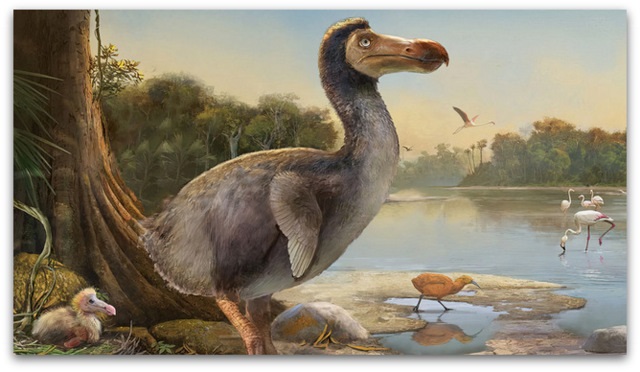The Dodo Comes Home | See how we will bring the legendary bird back to life

American company Colossal Biosciences from Dallas (Texas, USA) uses stem cell and genome editing technology to create a modern approximation of the dodo species.
The cost of the project exceeds 225 million dollars (208 million euros).
The goal is to bring the dodo back to life more than 350 years after it was exterminated by European explorers in Mauritius.
To achieve this goal, the researchers collaborated with the Mauritius Wildlife Foundation to find a suitable location for the first flock of dodos once they are reared in the laboratory.
The first laboratory dodo is expected to be born in this decade.
Before being exterminated in the 17th century, this flightless bird was endemic to Mauritius in the Indian Ocean.
Modern tools
Scientists hope that the chick that hatches will look like something between a Nicobar pigeon and a Dodo. To achieve this goal, they will need to change the genetic makeup of Nicobar pigeon skin cells using the Crispr-Cas9 gene editing tool.
Although many scientists express doubts about the authenticity of the newly created species, the researchers claim that the available technology will allow the creation of a bird that will be very close to the original Dodo species.
“The dodo, a bird deeply woven into the DNA of Mauritius, is also, unfortunately, legendary because of the role humanity has played in its extinction,” says Vikash Tatayah, director of conservation at the Mauritius Wildlife Foundation in Mauritius, adding:
“This project symbolizes efforts to prevent the extinction of species. We are grateful for Colossal’s technologies and pledge to return this iconic species, extinct in the 1680s, to its natural habitat.”
Reports of Dutch sailors
The dodo (Raphus cucullatus) is a relative of pigeons. It fed on fruit and nested on the ground. The bird’s main food was the fruits of the Sideroxylon grandiflorum tree, which is called “the dodo tree” after it.
This unusual bird became extinct in the mid or late 17th century and is used today as an archetype for extinct animal species, primarily due to the fact that its extinction was caused by the arrival of man in Mauritius, 1598.
It also left an impact on the culture and language and occupies a significant place in the history of that island.
According to Dutch sailors, the dodo was about 1 m tall and weighed 20 to 25 kg.
However, recent research has shown that he probably weighed about 17 kilograms and was about 75 centimeters tall. The sexes differed significantly in size (sexual dimorphism). Males were larger and heavier.








